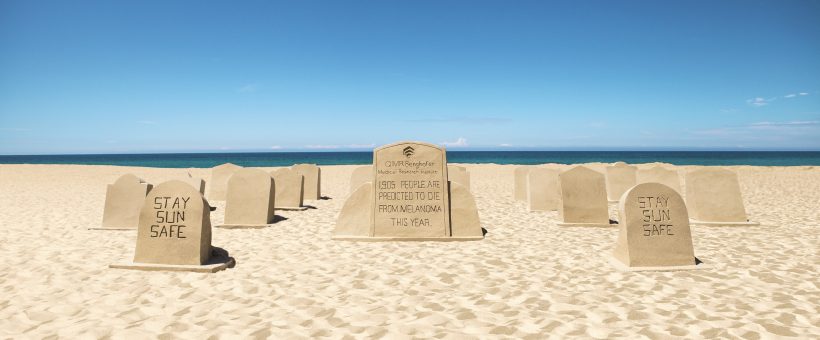Online risk predictor help identify people high risk melanoma

Researchers at QIMR Berghofer Medical Research Institute have developed an online test for people aged 40 and over to predict their risk of developing melanoma over the next 3.5 years.
Professor David Whiteman and Dr Catherine Olsen developed the risk predictor using data from nearly 42,000 people aged from their forties to seventies. It calculates the results based on seven risk factors for melanoma. These are age, sex, ability to tan, number of moles at age 21, number of skin lesions treated, hair colour and sunscreen use.
The melanoma risk predictor was developed from the world’s largest study of skin cancer and has proven highly accurate in tests. A research paper about the development and performance of the risk prediction tool has been published today in the prestigious Journal of the National Cancer Institute.
Professor Whiteman said members of the public could now use the risk predictor by visiting www.qimrberghofer.edu.au/melanomariskpredictor.
“At the moment, cancer control agencies don’t recommend population-wide screening programs for melanoma. It’s up to individuals to talk to their doctors about whether they need regular skin checks,” Professor Whiteman said.
“This online risk predictor will help identify those people with the highest likelihood of developing melanoma so that they and their doctors can decide how to best manage their risk.
“Regular screening of those at highest risk may help to detect melanomas early, and hopefully before they’ve spread to the lower layers of the skin and other parts of the body.
“Importantly, in this study, we found that people’s actual risk of melanoma was quite different to their own assessment. This highlights the importance of getting personalised advice on your melanoma risk, because it could well be different to your perceived risk.”
Professor Whiteman said the team now planned to trial the online melanoma risk predictor among skin cancer doctors and their patients to test how it performs in the clinic.
Melanoma is the fourth most common cancer in Australia. Cancer Australia predicts that in 2018 1,905 people will die from melanoma and 14,320 new cases will be diagnosed nationally.
“Last year a QIMR Berghofer study found that melanoma cost the Australian healthcare system $201 million in 2017,” Professor Whiteman said.
“We hope that by identifying those who might benefit from regular skin checks, the online melanoma risk predictor will help to ease pressure on the healthcare system.”
While other melanoma risk predictors have been developed previously, they were based on research with different study designs and were less accurate.
“We have tested our online risk predictor thoroughly and found that it is accurate at predicting a person’s risk of developing melanoma,” Professor Whiteman said.
“Nonetheless, people should be aware that the tool provides only an estimate of future risk and it is not a substitute for getting their skin checked by a doctor.
“We encourage people to use it as a general guide, and if it says you have a high risk of melanoma, we strongly encourage you to visit your doctor and discuss whether a skin check would benefit you.
“Even if you have a low to medium risk, you still need to be sun safe. Most Australians are at a higher risk of melanoma than people in other countries due to the combined effects of fair skin and very high levels of sunlight.
“If you’re spending time outdoors this weekend, don’t become a statistic: remember to slip, slop, slap, seek and slide.”
The study was funded by the National Health and Medical Research Council of Australia.
Media: Siobhan Barry, +61 7 3362 0280, media@qimrberghofer.edu.au




